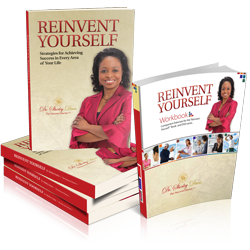In part 1 of this three part series on Employee Engagement I outlined some of the dramatic shifts that will continue to shape the workforce in the next 10 years making it the most diverse, global, hyper-connected and virtual workforce than any other time in history. I shared some human capital challenges that will plague organizations who do not focus on employee engagement. I described the current state of employee engagement according to the latest findings from Gallup, Towers Watson, and the Hay Group revealing that the total number of employees who are Actively Engaged is only 30%, up 1% from the prior two years. That means that 70% of employees are Disengaged and Actively Disengaged. Finally, I listed five of the most common drivers of employee engagement including the work itself, the management environment, flexibility and inclusion, the ability to learn and grow, and trust and meaning from Leadership.
In this series, I will further describe each of these drivers and identify who’s most engaged and who’s not and why. I’ll also share what companies who are listed as Best Places to Work are doing to address this issue.
The Work Itself—Employees report that they want work that is challenging, utilizes their skills and grows new ones, provides meaning, and contributes to the company’s objectives.
The Management Environment—Employees today want leaders and not managers. Managers ensure that rules are adhered to, while leaders guide and inspire others to perform at their best potential. Employees also want an environment where leaders are authentic, respectful, inclusive, visionary, consistent, fair, capable and knowledgeable and invested in their development.
Flexible and Inclusive Workplace—More and more research reveals that inclusion and workplace flexibility are key drivers of why people choose to work for companies, why they stay, and why they are more productive. Organizations must adopt flexible work arrangements to accommodate the 21st century workforce in which nearly 40% of them report that they would even be willing to take a pay cut if they could enjoy more flexible work arrangements.
Ability to Learn and Grow—Employees want to take on broader assignments and new projects that will enable them to grow new skills and experiences. It doesn’t always have to be promotional opportunities (as they are often slim the further you go up the organization). Help them to understand how lateral moves and stretch assignments can be meaningful and have longer term payoffs in their career.
Trust and Meaning from Leadership—Trust in leadership tended to be the most common reason why employees were disengaged at work. They want to see leaders “walk the talk,” behave consistently with the organization’s core values, and be genuine and authentic in their communications. In other words, tell them the truth about organizational changes, the state of the company, and the real reason behind decisions that are made.
So Who’s More Engaged and Who’s Least Engaged?
According to the Gallup Organization:
- Americans who have at least some college education are significantly less likely to be engaged in their jobs than are those with a high school diploma or less.
- Additionally, workers aged 30 to 64 are less likely to be engaged at work than are those who are younger or older.
- Workers aged 65 and older are the most likely to be engaged in their jobs.
- Men are much less likely than women to be engaged at work. There are no significant differences in employee engagement by income level.
I would love your thoughts on why you think these statistics ring true for each group.
Examples of What Companies are Doing to Increase Employee Engagement and Loyalty
There are a number of companies who have been consistently identified as Great Places to Work because of how they have built cultures of inclusion, flexibility, great leadership, and engagement. For example, Google has created an environment for employees to thrive that goes beyond stocking its kitchens with free gourmet food and on-site laundry service. Its corporate culture is one of the reasons it is consistently ranked a great place to work. Recreational Equipment (REI) uses social media to get intimate with employees. Its online “company campfire” offers associates and executives the ability to share their thoughts and participate in lively debates and discussions. More than 4,500 of its 11,000 employees have logged in at least once since it was launched last year– demonstrating that having a voice matters to engagement. DHL Express takes employee engagement seriously in the office, on the roads and in the air. It has an incredible culture of thanking employees, whether that’s through monetary rewards, honoring top performers at its annual Hollywood-style black-tie event or pinning notes of appreciation on the company corkboard. At SAP, communication is core to the culture. Employees understand the “why” behind their jobs – what they’re expected to achieve and why it’s important to the greater good of the organization. Collaboration is valued and teams communicate globally to get projects accomplished. Leaders listen to employee feedback and encourage it.
These are just a few examples of how companies are building greater employee engagement. They understand what employees are thinking; they create an intentional culture; they demonstrate appreciation for contributions at any level; they commit to open, honest communication, and they know how to communicate the organization’s stories.
In the final installment of this three part series (coming Jan. 13, 2015), I will share twelve strategies for how organizations and leaders can increase employee loyalty and engagement and how they can contribute to business success and greater profitability.
If you would like to access the recent webcast that I presented on this topic to see the slides and hear more in detail, click here: http://www.shrm.org/multimedia/webcasts/pages/1214davis.aspx
Are you disengaged at work and want to reinvent yourself? Check out my new book. It is chockfull of strategies and tips that will empower you to achieve success not only in your career but in every area of your life. There’s also a companion workbook full of activities, assessments, and personal reflection questions that will walk you through your journey to transformation. Click here for more details https://new.drshirleydavis.com/product/reinvent-bundle-book-workbook/
And be sure to sign up for my E-newsletter—The Success Doctor’s Digest

